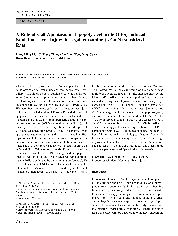摘要
Lipopolysaccharide (LPS) is implicated in the pathology of acute liver injury and can induce lethal liver failure when simultaneously administered with D-galactosamine (D-GalN). At the present time, nonlethal liver failure, the liver injury of clinical implication, is incompletely understood following challenge by low-dose LPS/D-GalN. We report here our investigation of the effects of liver injury following a nonlethal dose LPS/D-GalN and the role of apoptosis in this disorder. Blood biochemistry indexes, including those of alanine aminotransferase (ALT), aspartate aminotransferase (AST) and total bilirubin (TBIL), had risen by 6 h post-LPS/D-GalN injection, reached a peak at 24 h and sustained high levels at 48 h. An abnormal liver appearance was found at 24 and 48 h post-injection. Histopathological changes of hepatic injuries accompanied by hepatocellular death, inflammatory infiltration and hemorrhage began to appear at 6 h and were markedly aggravated at 24 and 48 h. Cell apoptosis was significantly induced by the nonlethal dose LPS/D-GalN challenge, and the apoptotic indexes (AIs) in 24 h-and 48 h- treated rats were approximately 70%, as estimated by the terminal transferase dUTP nick end labeling (TUNEL) assay. The mRNA levels of the inflammatory cytokine IL-1 beta rose markedly at 6 h and maintained high levels at 24 and 48 h; however, TNF-alpha a levels were normal in the liver tissues of 6-, 24- and 48- h-treated rats. mRNA expression of the damage gene nitric oxide synthase (NOS) was also induced early by the LPS/D-GalN challenge, reaching a peak at 6 h, then gradually decreasing in a stepwise manner; conversely, high expression levels of the apoptosis-inducing gene p53 mRNA were not found in the early post-injection period ( 6 h) but emerged in the crest-time of liver apoptosis (24 h) and were maintained at this level until the late stage (48 h). We also observed that in 24 h-treated rats, caspase-3,-8, -9 and -12 were markedly activated by LPS/D-GalN challenge. These results suggest that a challenge with low-dose LPS in conjunction with D-GalN can induce nonlethal but marked liver failure, the main morphological feature of which is hepatic apoptosis, which may be associated with a high expression of inducible (i) NOS (early post-injection period) and p53 genes (in the mid and late stages) and at least three apoptosis pathways participate in the pathogenesis.
- 出版日期2008-5
- 单位南昌大学
